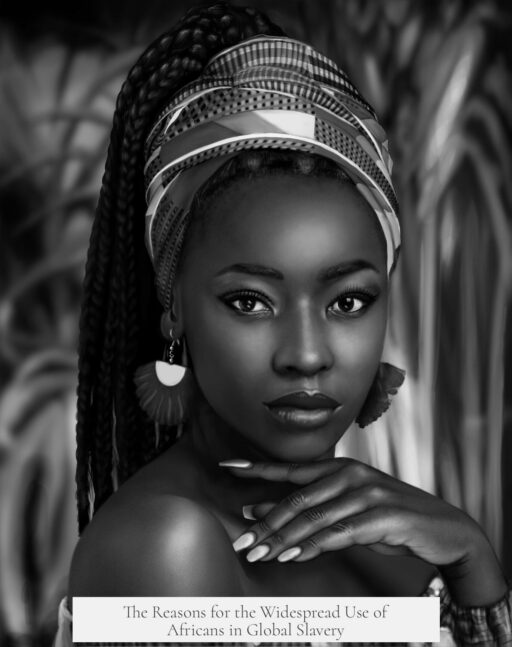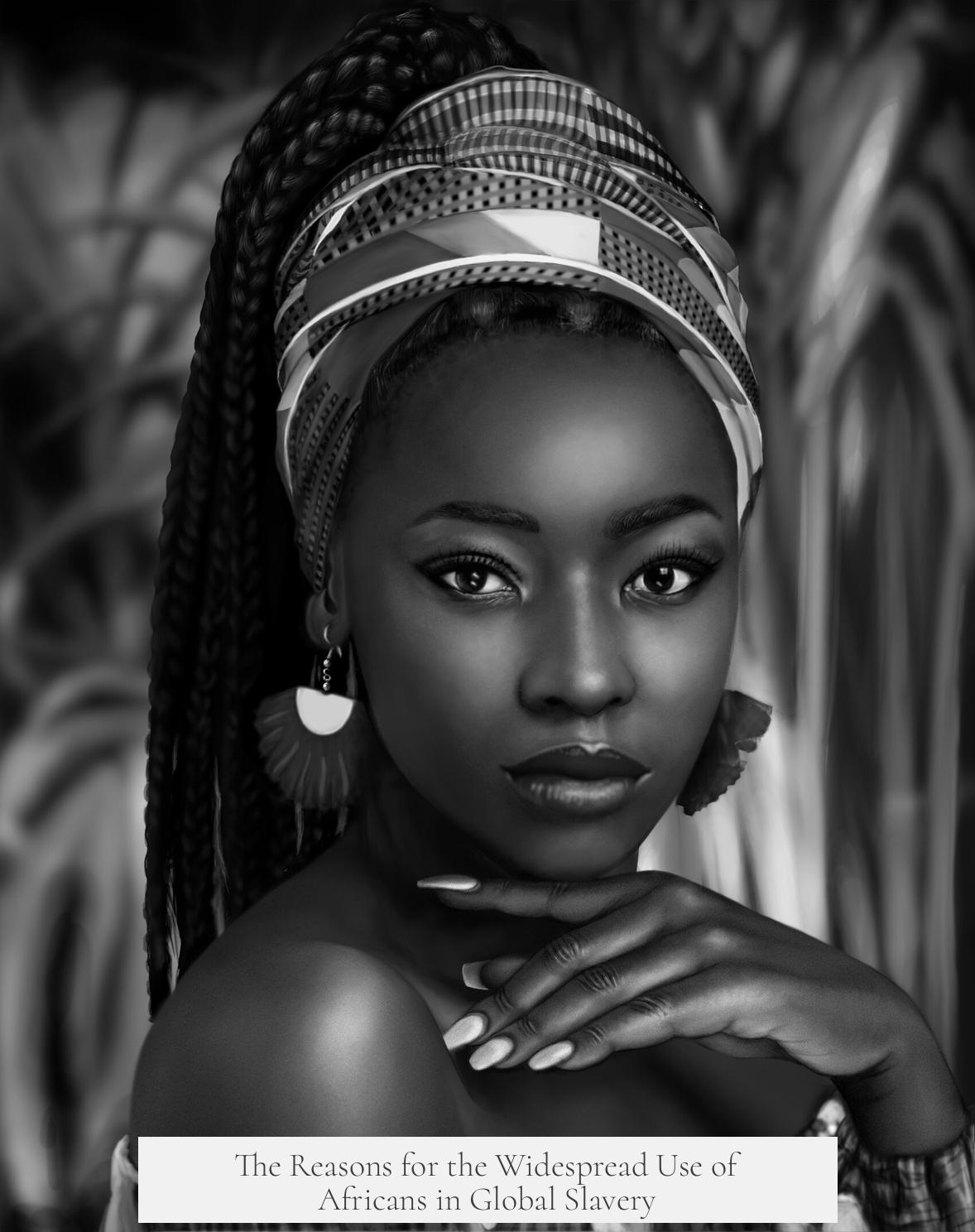Africans were widely used for slavery by the rest of the world due to a combination of labor demand in the New World, the unsuitability of Native Americans as slaves, geographical and political factors in Africa, and the dynamics of West African societies shaped by European trade. These factors, combined with the evolution of European cultural attitudes and the existing African slave systems, made Africans the primary source of enslaved laborers during the Atlantic Slave Trade.
The establishment of plantations in the Americas created a high demand for cheap, reliable laborers. European settlers initially attempted to enslave Native Americans. However, indigenous peoples suffered massive mortality from diseases introduced by Europeans, such as smallpox and measles, to which they had no natural immunity. Additionally, Native Americans were familiar with their environment and could escape or resist enslavement more effectively, making their use as slave labor economically unviable.
In contrast, Africans presented several advantages as slaves. West Africa was geographically closer to Europe and the New World. This proximity facilitated transportation and trade. Politically, many West African states lacked the military technology, such as firearms, that Europeans possessed, making it difficult to resist the slave trade. Africans also had some resistance to the tropical diseases that debilitated Europeans in the colonies, making them better suited for labor in similar climates.
The introduction of European firearms into West Africa profoundly altered the region’s social and political structures. Europeans exchanged guns, primarily for male slaves, which escalated warfare among African groups. Controlling access to firearms meant controlling power. To acquire guns, African rulers and warlords raided neighboring communities to capture slaves for sale to Europeans. This dynamic entrenched a cycle of conflict and slave trading, making slave capture and sale a central economic activity.
Slavery in Africa predated European contact but differed from the chattel slavery imposed in the New World. African slavery often resembled indentured servitude, with slaves integrated into households or communities and sometimes able to regain freedom. Europeans, however, demanded large numbers of male slaves for plantation labor, which Africans could supply by selling captives or prisoners of war. Over time, as the nature of slavery became clearer, Africans sometimes kidnapped individuals to meet European demand for slaves.
The widespread use of Africans as slaves also stemmed from the absence of powerful, centralized governments in many regions capable of defending against raids. This fragmentation allowed both European slave traders and African middlemen to facilitate the slave trade with relatively little resistance. These African intermediaries would capture and sell slaves, often from rival ethnic groups.
European perceptions contributed to the continuation of African slavery. Europeans viewed Africans as culturally different, often judging them by European standards of civilization. For example, African clothing customs and social practices were misinterpreted as signs of inferiority or savagery. Such views dehumanized Africans, reinforcing the justification for enslaving them. Notably, racism developed largely as a consequence of slavery, not a primary cause. Europeans constructed racist ideologies to rationalize enslaving an entire race while maintaining their self-image as moral actors.
The Atlantic Slave Trade expanded dramatically from the 16th to the 18th centuries. The volume of slaves transported across the Atlantic grew from roughly 5,000 per year during the 1500s to over 100,000 annually by the late 1700s, driven by Europe’s growing colonial empires in tropical America. Africans were deemed more suitable for the harsh plantation environments due to their disease resistance and agricultural knowledge.
| Factor | Explanation |
|---|---|
| Labor Demand | Plantations required a large, controllable workforce for cash crops like sugar and tobacco. |
| Native American Unsuitability | High mortality from disease and ease of escape made indigenous people unreliable slaves. |
| Geography and Proximity | West Africa’s closeness to Europe and the Americas facilitated slave trade logistics. |
| Political and Military Factors | Lack of centralized power and firearms among Africans led to vulnerability to raids and trade. |
| Resistance to Disease | Africans had immunity to tropical diseases that Europeans and Native Americans lacked. |
| Economic Incentives | African intermediaries profited from selling slaves, incentivizing continuation of the trade. |
| Cultural Misunderstandings | European judgments dehumanized Africans, facilitating acceptance of slavery. |
The use of Africans for slavery emerged from a complex interplay of economic imperatives, local African politics, disease ecology, and European cultural perceptions. Africans’ pre-existing systems of slavery, combined with European technologies and demands, transformed these into the transatlantic chattel slavery system.
- European settlers needed laborers for plantations after initial colonization phases.
- Native Americans died quickly from diseases and escaped easily, reducing suitability as slaves.
- West Africa’s proximity and weak centralized states made it accessible for slave traders.
- Africans had partial disease immunity, making them durable laborers in tropical colonies.
- Firearms trade intensified African conflicts, increasing slave supply through raids.
- Pre-colonial African slavery was more temporary, but evolved under European demands.
- Absent strong African governments facilitated ongoing raids and slave capture.
- European cultural misunderstandings and racism justified the enslavement of Africans.
Why Were Africans So Widely Used for Slavery by the Rest of the World?
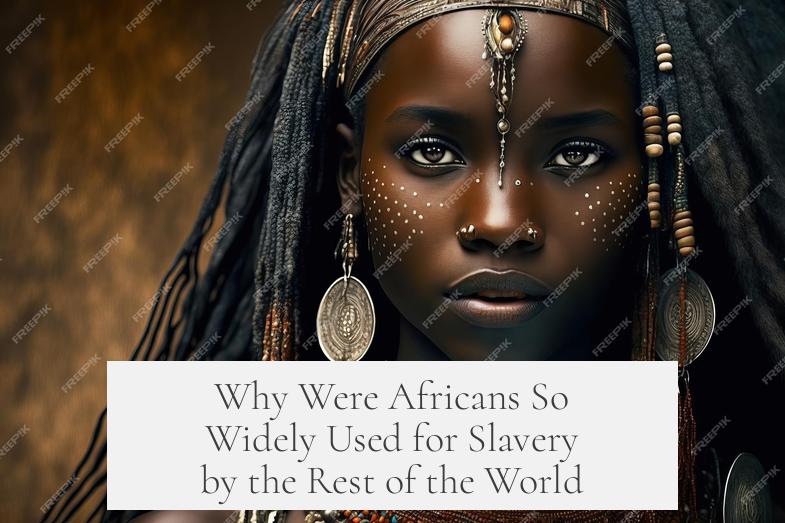
The simple answer: Africans were widely used for slavery because they were available, suitable, and vulnerable in ways other groups were not. This mix of factors — from the New World’s demand for labor and the unsuitability of Native Americans to African geographic, social, and political conditions — made Africans the primary source of forced labor for centuries.
Let’s peel back the layers and explore the complex story behind this dark chapter in human history. Buckle up; there’s more to it than just “they were different.”
Demand for Labor in the New World
The Europeans, fresh off their initial loot fest, found a new way to make money. With the vast lands of the New World ripe for earning profits, plantations rose like beanstalks, growing cash crops like sugar, tobacco, and cotton. These farms required relentless, subservient laborers.
Local Native Americans were the obvious candidates. But things didn’t go as planned.
Why Not Native Americans?
Europeans quickly discovered two big problems: diseases and escape tactics. Native populations were decimated by European diseases like smallpox — diseases they never encountered before. The high mortality rates made them unreliable as long-term labor.
Plus, Native Americans had home-advantage. They knew every creek, forest, and hiding spot. Running away was easier when the terrain was familiar. Europeans struggled to catch runaways in the vast, wild lands. So, enslaving Native Americans wasn’t sustainable.
Africans: The “Ideal” Source of Labor
So, who was left? Africans became the “go-to” labor source, due to a mix of geography, politics, and brutal pragmatism.
- Proximity and Access: West Africa wasn’t across the ocean for Europeans. It was nearby—close enough to sail from Europe or on to plantations in the New World.
- Fragmented African States: Unlike centralized powers ready to mount defenses, many West African regions lacked strong, unified governments capable of resisting slave raids or the European slave trade machinery.
- Weak Technology: Africans, for the most part, lacked guns and advanced military tools. This technological gap made it easier for Europeans to exert control and influence slave trading dynamics.
- Disease Resistance: Africans themselves had been living with many tropical diseases for generations. The same diseases that devastated Native Americans were mostly familiar to Africans, making them more resistant and viable as labor in similar tropical climates.
Just picture it: Europeans arrive offering shiny muskets—a brand-new kind of power. Suddenly guns become a “must-have” weapon in African regional conflicts. To get guns, African leaders resorted to capturing and selling slaves—often their own neighbors or captives from wars.
The Role of Guns in Shaping the Slave Trade
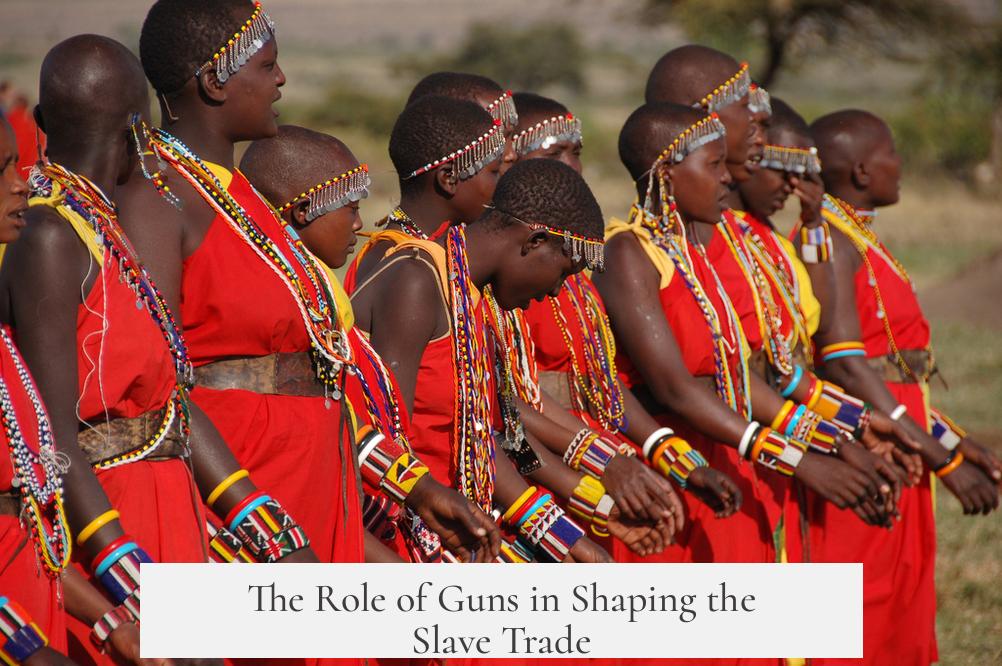
The arrival of guns transformed West African societies. No longer was slavery just a minor institution—it became an economic and military system. African rulers needed guns to defend their lands and expand them. The way to obtain these weapons? Capture people to sell as slaves, mostly men.
Nonstop warfare erupted as communities tried to outgun each other. It became a brutal cycle: raid, capture, sell, buy guns, repeat. States near the coast oriented their entire economies around slave raiding and trading. Refusing meant risking becoming a slave yourself.
African Slavery vs. European Chattel Slavery
It’s important to know that slavery existed in Africa before Europeans showed up. However, African slavery was different:
- Slaves were often captives of war, not (usually) permanently enslaved for life;
- Many slaves served as forced wives or laborers for limited periods, not lifelong chattel;
- Ownership could blend into family and social systems, especially in polygamous societies.
Europeans, however, demanded healthy male laborers for continuous, harsh work overseas. African sellers found it convenient to sell men and keep women, as men were less desirable slaves for African owners. Africans sometimes kidnapped people to meet this new European demand.
But Were Africans Easier to Acquire as Slaves?
Yes. Unlike Native Americans, who had the home advantage, Africans were sometimes sold by other Africans. The lack of centralized power structures in some regions made populations vulnerable to raids by neighbors who wanted firearms. The tragic fact is: Africans had their own internal conflicts and systems that contributed to the slave trade’s growth.
The Roots of Racism Emerge After Enslavement
Interestingly, racism did not start as the reason for slavery, but sometimes developed afterwards. Europeans had to justify enslaving millions of Africans without feeling like monsters. They began to paint Africans as less human — savage, wild, and naturally fit to be slaves.
Take clothing, for example. African people living in hot climates wore less — sometimes even bare-breasted. Europeans, with their strict modesty rules, saw this as immoral or depraved. They used such judgments to label Africans ‘uncivilized’ and validate their enslavement.
The Scale of the Atlantic Slave Trade
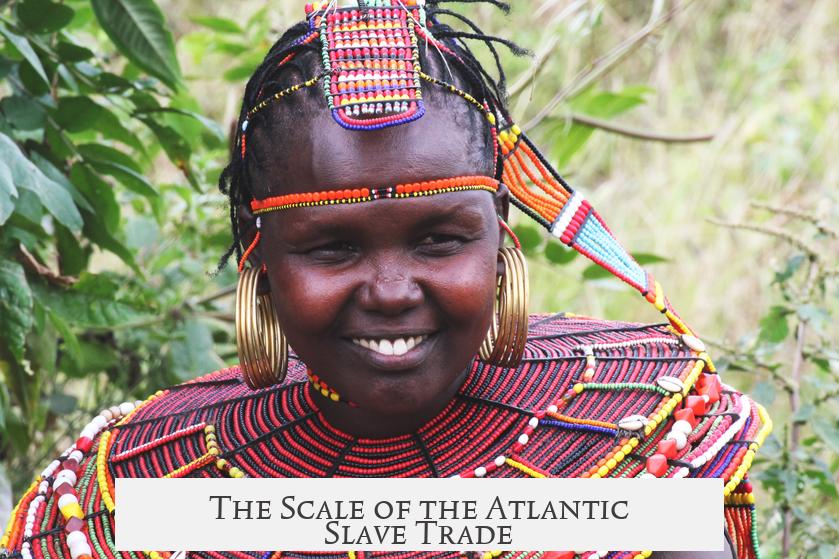
From the 15th century onward, the transatlantic slave trade exploded. Initial figures show about 5,000 slaves per year in the 16th century. By the late 18th century, over 100,000 enslaved Africans were shipped yearly to meet the unquenchable labor demands of European colonies across the Americas.
These were not just numbers; behind each was a destroyed community, a ruptured family, a loss more tragic than statistics can convey.
Where Did the Slaves Come From?
Slaves often were prisoners of war from African inter-tribal conflicts, victims of territorial expansions, or people seized by powerful local warlords. The availability of enslaved people in these conditions was grimly steady.
Reflections and Lessons
Now, this story isn’t about placing blame on any single party but understanding harsh realities of history. Several factors—economic, political, social, and environmental—converged to create the devastating system we call the Atlantic Slave Trade.
Are there lessons for us? Absolutely. Understanding this history helps unravel misconceptions about race and subjugation. It shows how economic incentives and power imbalances can quickly dehumanize entire populations, and how systems of oppression evolve beyond the original human intentions.
So, Why Were Africans So Widely Used for Slavery?
Because Africans matched the brutal criteria for a labor supply: proximity, vulnerability, disease resistance, and internal social dynamics made them the “chosen” victims. Add the demand for labor in the New World, the failure to use Native American populations, and the technological and political circumstances in Africa, and it becomes brutally clear why Africans bore the weight of the transatlantic slave system.
This history is painful but vital to remember. It teaches us how complex human actions and systems intertwine—far beyond simple answers—and highlights why empathy and justice remain crucial.
Feeling overwhelmed? It’s natural. History rarely offers neat packages. But understanding it, with all its harsh truths, is a step toward making sure such horror never repeats.
If you want to dive deeper, consider reading scholarly works on African history and the Atlantic Slave Trade, or personal stories from descendant communities—the human side reveals much beyond facts and figures.
Why were Native Americans not widely used as slaves like Africans?
Native Americans suffered massive deaths from diseases brought by Europeans. They also knew the land well, making escape easier. Europeans found them unsuitable as long-term laborers for plantations.
What made Africans more suitable for slavery compared to others?
Africans had some resistance to tropical diseases. West Africa was near Europe and the Americas, making transport easier. Lacking guns, many African states could not resist European slave traders.
How did the introduction of guns influence the African slave trade?
Europeans traded guns for slaves. This sparked more warfare within Africa as groups raided neighbors to capture slaves. Political systems shifted around the slave trade and military power.
Did racism cause the enslavement of Africans?
Racism largely developed after the enslavement process. Europeans justified enslavement by depicting Africans as inferior, adapting beliefs to excuse slavery.
Why were Africans readily available for the Atlantic slave trade?
African societies already had systems of slavery, though different from European chattel slavery. Some Africans sold others as slaves to Europeans. This made obtaining slaves easier for Europeans.
